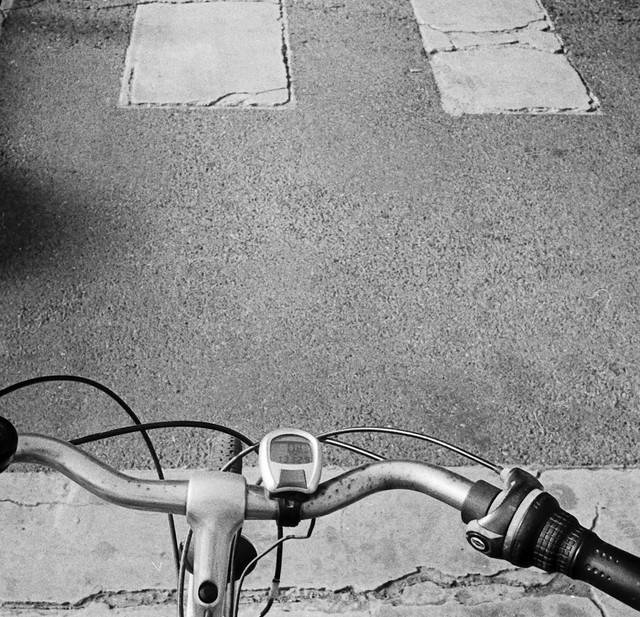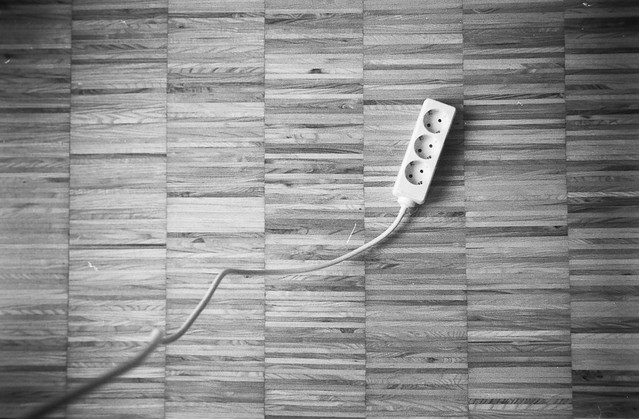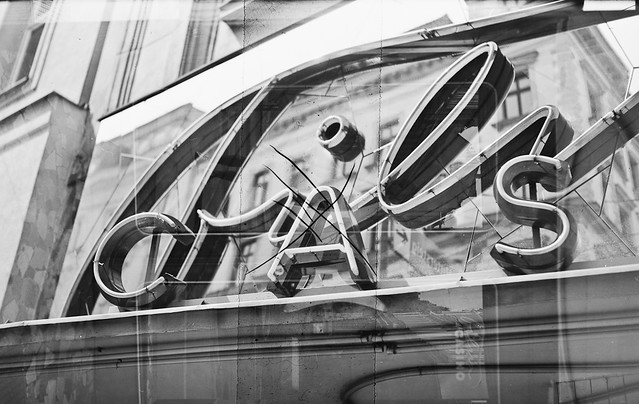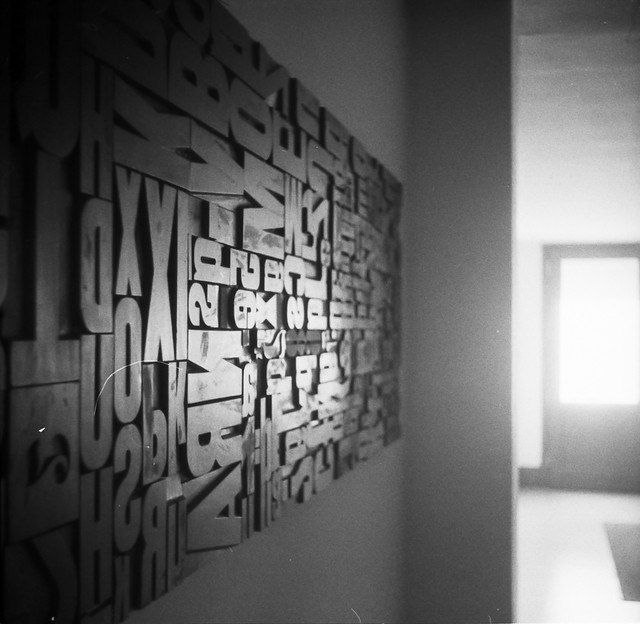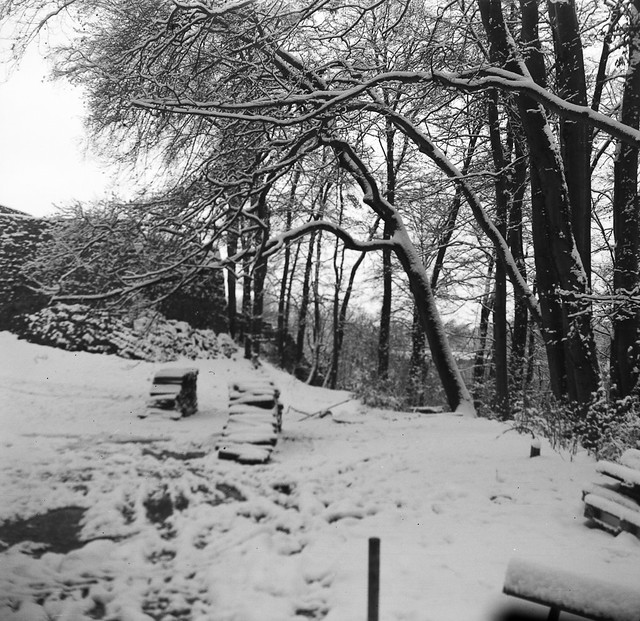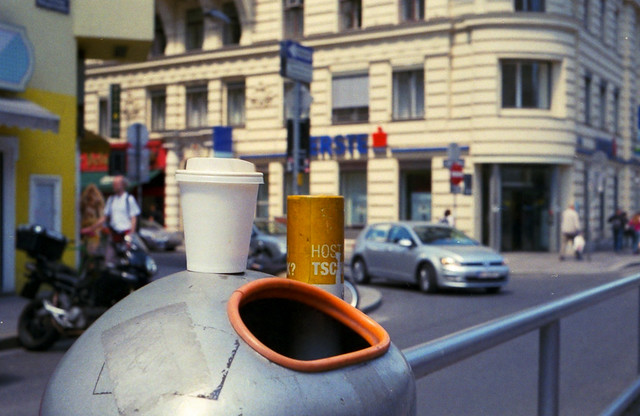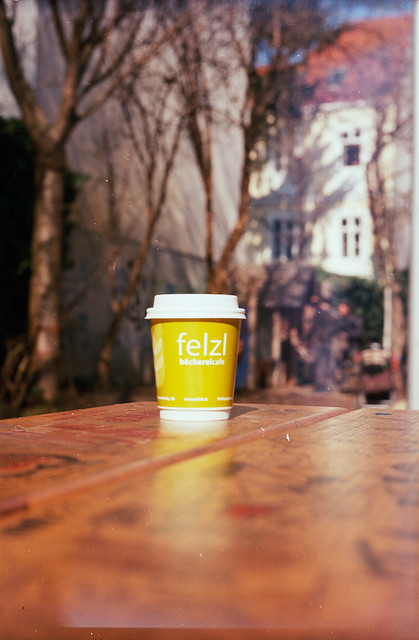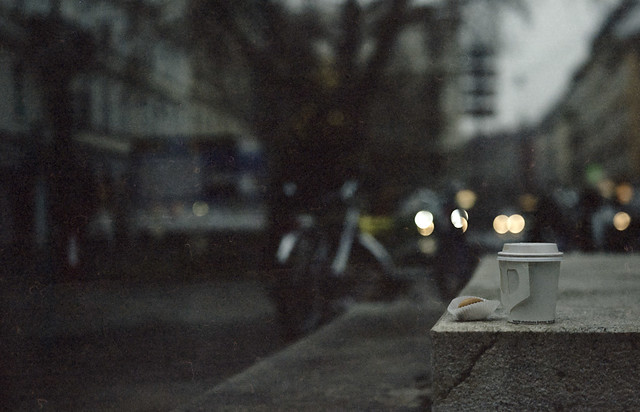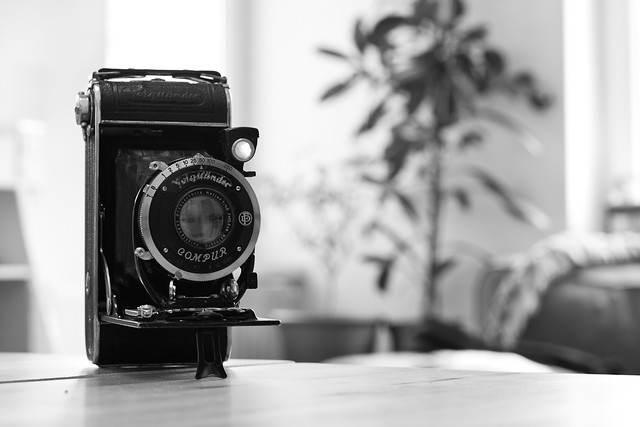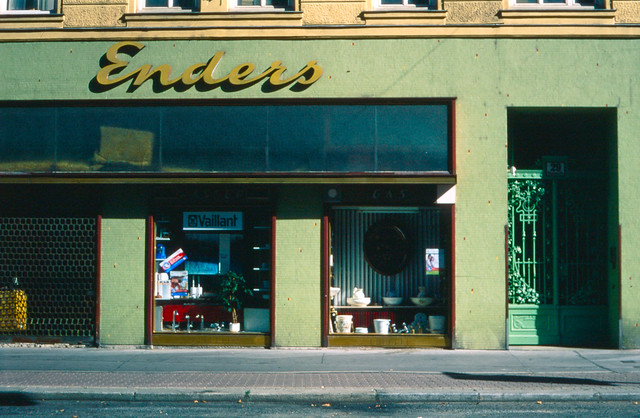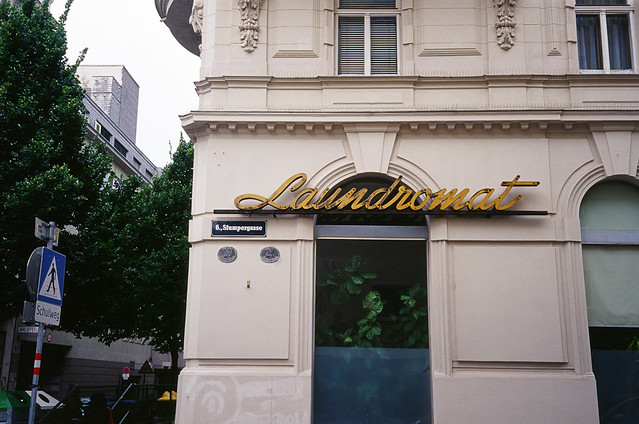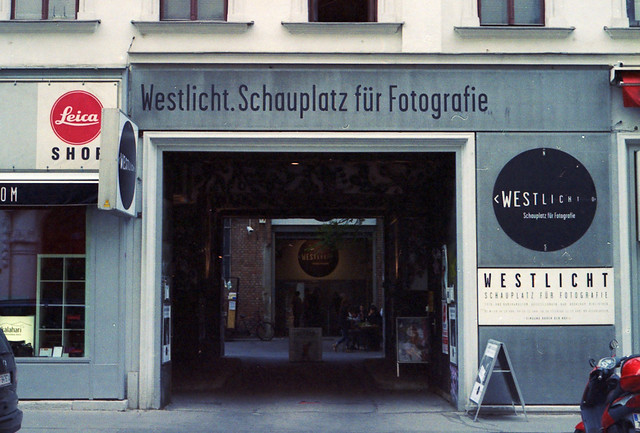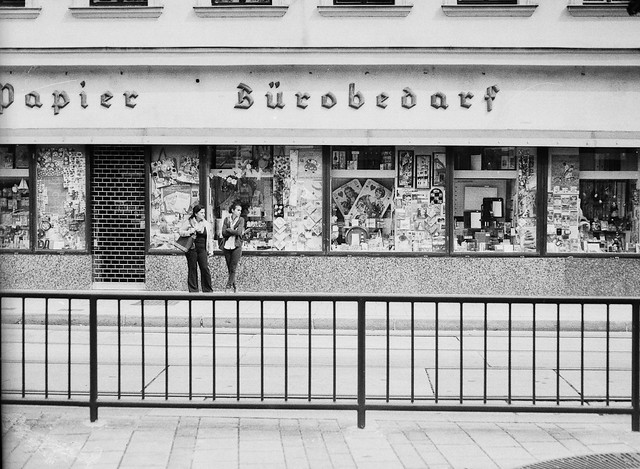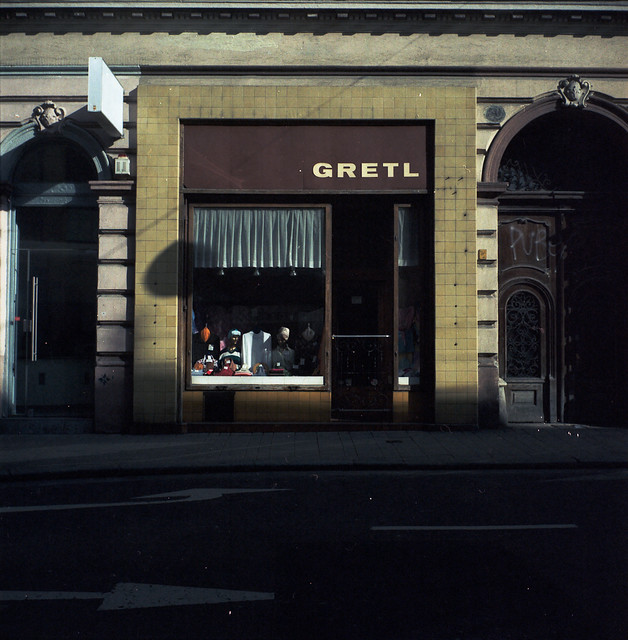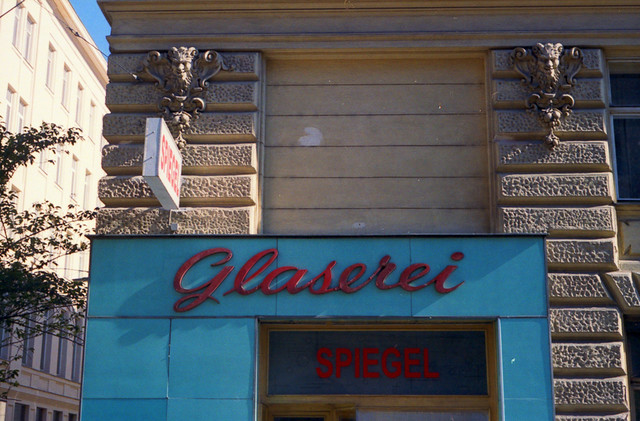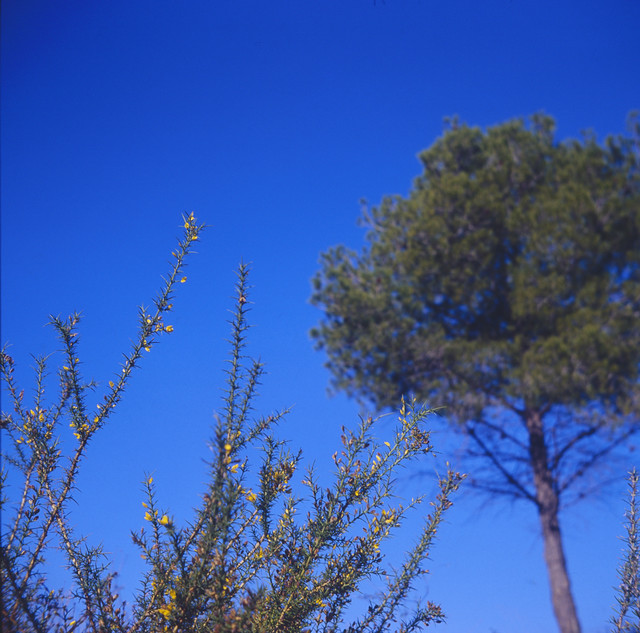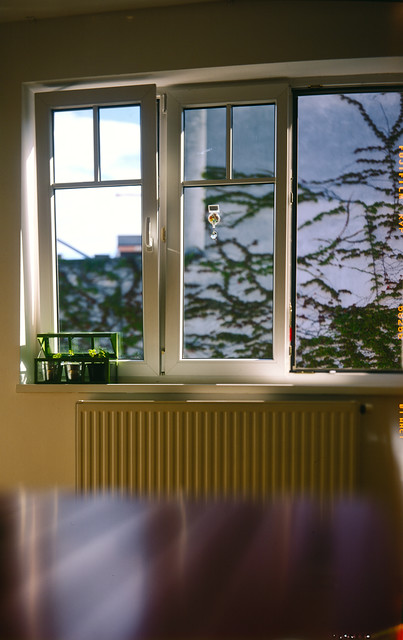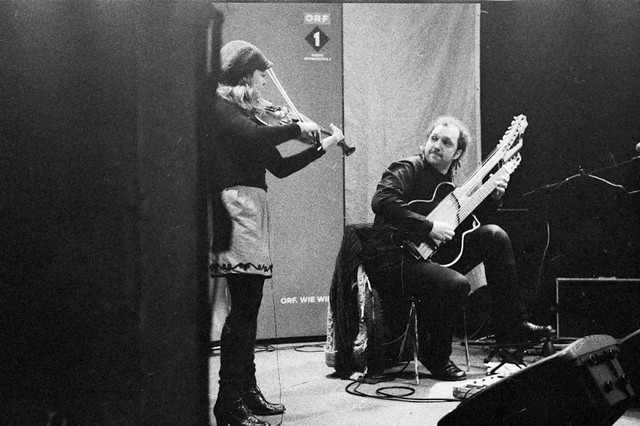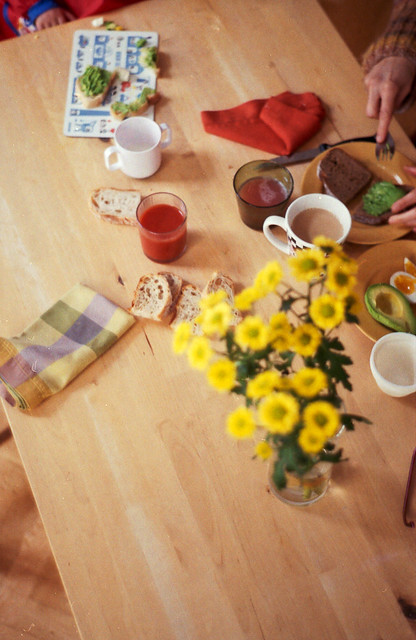For me, it all boils down to a fascination with simplicity, to the quest for a minimalistic picture taking setup. Film has been liberating in many aspects. No more coming back from a short excursion with 200+ digital pictures to find out that I have neither the time nor the willingness to process and sort them out. No more forgetting about spare batteries or memory cards. No more search for total picture perfection. I think we humans tend to overdo a bit: we wanted music perfection and along came high fidelity and digital audio to deliver just that. Then we realized that perfection was almost akin to lack of "soul", that what we actually loved was the background scratching noise of the good old vinyls. We asked for picture perfection and along came a herd of engineering and electronic wonders able to deliver just that. Still, we realized perfect pictures did not deliver the emotional response we were used to. On the other hand, film did just that for years, and still does. And here I am.
There have been many new old cameras this year. Each and every one with a certain meaning or purpose. But, in many cases, the collector has won over the photographer. There are certain sequences, certain regularities, certain historically significant milestones, that I now recognize as quite valid reasons to purchase a camera, although from a user point of view it has little or no added value. This year, as I will explain in a minute, the collector in me has been driven almost exclusively by a single word: Contax.
I am very happy after this fifth film year. When I look back at the pictures I took this year, I realize that I definitely grew up. There is a gut feeling about exposure, there is a familiarity with certain films, with certain lenses, with certain cameras, that is new and very reassuring. Of course I make mistakes every now and then, but this year there are a number of pictures that I am quite proud of. Last year I felt the photographer was the weak link in the chain. It still is, but I am happy to realize that I am working on it.
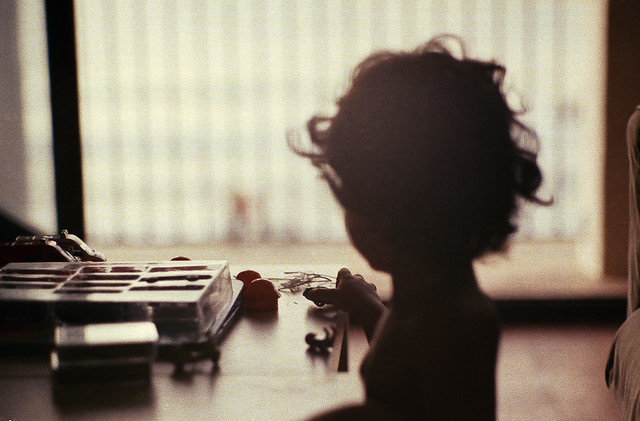
(Contax II, Solution Super VX 200, expired, ISO 200/24°)
The year started with an ongoing fascination for Contax rangefinders. Through active scouting and a couple of good luck strikes, I am now the proud owner of an almost complete lineup of Zeiss Ikon Contax 35mm rangefinders: both prewar Contax II (1938) and Contax III (1938) and postwar Contax IIa (1952) and Contax IIIa (1950-1951). The only one missing would be a Contax I, the first one introduced in 1932. They command prohibitive prices and have a reputation for being mechanically fragile. The collector in me is on the look. The user keeps telling him there is no hurry. These four cameras have been the ones I most used this year: 25 films in total, 10 alone with the Contax II. As a nice counterpoint to the Contax family, in late summer came along their arch-rival, the measure of all things, a wonderful Leica IIIa (1936).
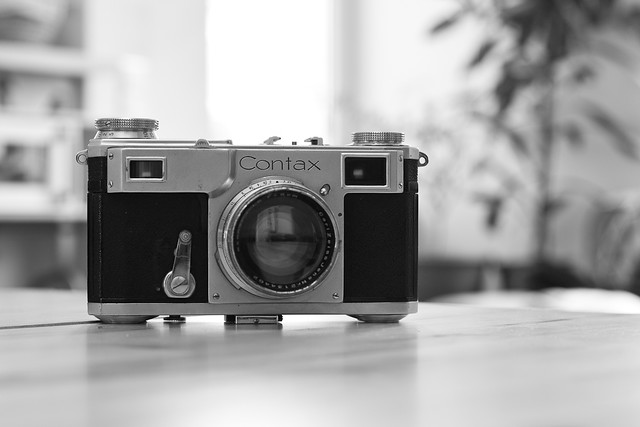
This rangefinder love story has not been just on 35mm film, though. I already owned Super Ikontas for 6x6 and 6x4.5 format on medium format 120 film. A relatively battered but functionally sound Voigtländer Bessa RF (1939) arrived to cover the wonderfully large 6x9 format with the reassurance of a rangefinder to set the focus distance right. With the unforgiving shallow depth of field of the 105mm lenses normal for this format, this is truly a great help. Again the Super Ikonta BX (6 rolls) and this Bessa RF (5 rolls) have been among the medium format cameras that I used the most this year.
Another interesting turn this year has been the (re)discovery of 35mm SLR cameras. Again, it all started with a Contax, but now the East German one, the first camera with a fixed pentaprism, the one that laid out the design that every single SLR camera followed for the next 60+ years (yes, dSLRs are still built after the Contax SLR today). First a Contax F (1956-1959), then a very early and still non working Contax S (1950). In order to learn the skills and tricks needed to return the Contax S to working order, I acquired a number of nonfunctional Contax F/Pentacon F "test objects" for little money, with the idea of repairing them, learn a lot and then sell them away. Two of the Fs, though, are so accurate and fine after getting a new set of shutter curtains that I have trouble parting with them... One of them, probably the Pentacon F, is definitely going to stay, because this way I can use the lens that came with the Contax S, a magnificent Carl Zeiss Jena Biotar 58mm 1:2.0 that seems to transform every single picture into a work of art. An Ihagee Kine-Exakta II (1949-1950) was, again, a nice counterpoint to the Contax family, to enjoy the reversed image on its waist level finder.
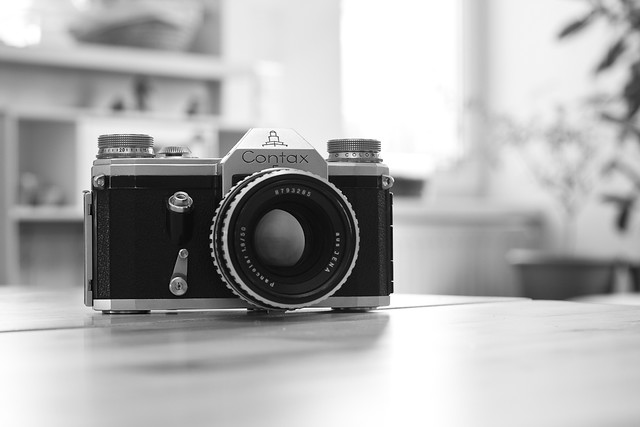
Talking about lineups and families, I could not resist an early F&H Rolleiflex Automat 6x6 (1938-1939) that came with a bunch of accessories and has been too (with 6 rolls) among the most used medium format cameras this year. The Rolleiflexes I own now are a Rolleiflex Original 611 (1929), a Rolleiflex Old Standard 621 (1935) and this Rolleiflex Automat 631 (1938-1939). See the sequence there? As I said, I could not resist... :) There is a very interesting story about the repair process of this camera, but as it is still not fully completed, I hope I will find time later on for it. It involves a missing piece that was, in fact, not missing but dormant inside the camera for decades...
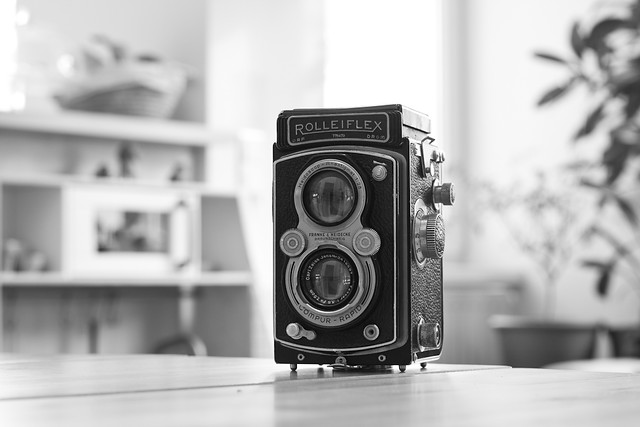
And finally, as the year was almost over, a revival of the venerable 9x12 sheet film format came with a Voigtländer Avus 9x12 horizontal (1925). As the online seller did not manage to open up the camera front, I got it without knowing what lens was on it or, for that matter, if it even had a lens! The price was really attractive though, so I got it anyway. As the camera arrived, I did manage to open the front and discovered a lens (Voigtländer Dynar 135mm 1:5.5) about which I did not know much. To my surprise, as I researched a bit, I discovered that the Dynar is no other than a second generation Heliar (one of my strongest longstanding favorite lenses of all time, as you can read here, here and here) that got another name to not mess with the sales and reputation of the first generation Heliar. Pictures taken with it reveal its true pedigree. Again, the story about transferring this lens to a more convenient 9x12 camera body (no other than a Voigtländer Bergheil 9x12) remains to be told soon. As it involves a certain amount of McGyver-esque use of cardboard adapter rings and had a happy ending, I hope it will be an amusing one.
When it comes to the films I used, this year has been a very balanced one (22 black&white, 24 color negative, 21 color slide). The ones I shot the most: Ilford HP5 Plus 400 for black&white, Kodak Portra 160NC for color negative and Agfaphoto CT Precisa 100 for color slide, with 5 rolls each. This year I experienced a reconciliation with long expired film. In fact, I shot much more expired than non-expired film this year. I did it, though, in a much more mindful way. I tried to adapt my shooting to the shortcomings and special needs that I learnt the hard way in the past. It is beginning to work out, I think.
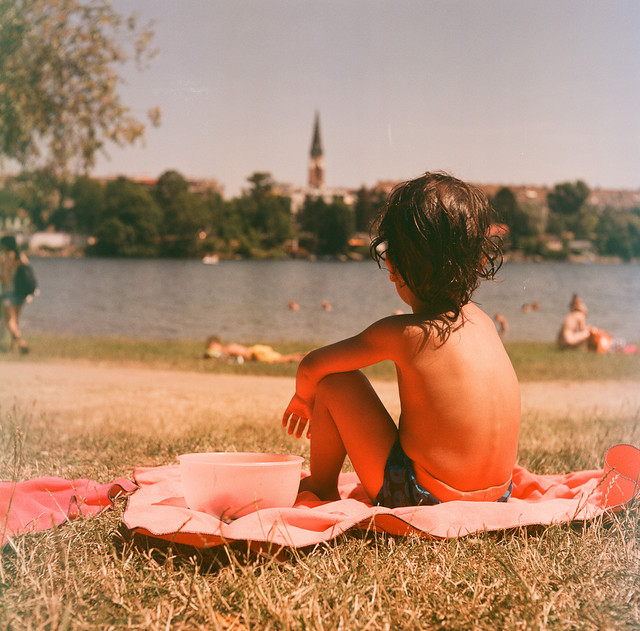
(Rolleiflex Automat 631, Fujicolor HR 100, expired 1986, ISO 100/21°)
Although this year I kept developing my black&white films at home (18 rolls in total), lately I found myself being lazy and bringing b&w film to the lab for development, too. I got myself a color negative development kit, but I did not manage to find the time and the motivation to try it. I guess the need to do my development in the evening or even late at night, when our son is already sleeping, does not help, as it neither does having to store everything in the broom closet afterwards. Alas, I guess there might come a time where I am more inspired to develop.
What I kept doing, though, is fixing and servicing my cameras. This year I am particularly proud of the successful rangefinder adjustment of my Bessa RF, on which I went almost exclusively by feeling, after realizing that the only hints I found online were in fact meant to solve another issue. Another fun repair was the sticky film advance/cocking lever on a Zeiss Ikon Taxona, for which I needed an almost complete strip down to remove the hardened grease that was preventing a smooth operation. I have become relatively proficient at replacing stiff shutter curtains on East German Contaxes, although the whole point of this learning, bringing back the Zeiss Ikon Contax S to life, has not been reached yet. And not to forget the repairs that I mentioned before: first, recovering infinity focus on my Rolleiflex Automat 631 and recovering its automatic stop on film advance (still a work in progress), and second, transferring Compur shutter and Dynar lens from an early Voigtländer Avus 9x12 horizontal to a later Voigtländer Bergheil 9x12 body with Bergheil bayonet. What I still did not have the guts to tackle, though, was the one repair that I told about one year ago: replacing the broken shutter ribbons and the slow speeds on a Zeiss Ikon Contax II. I must admit I cheated a little bit on this one, since the Contax II that has become my favorite this year is in fact another (working) one which I came across. Still, the prewar Contax II is high in my to-do list.

(Contax IIa, Fujichrome Provia 400, expired 2000, ISO 400/27°)
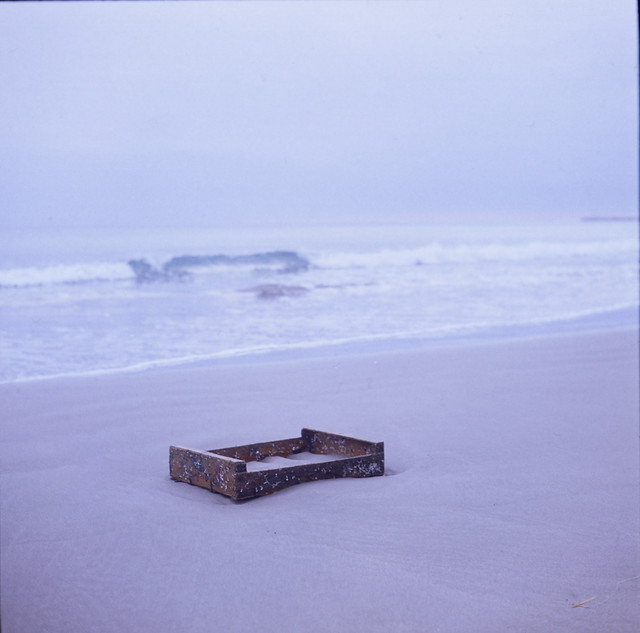
(Super Ikonta BX, Fujichrome Provia 400X, ISO 400/27°)
As I said, I am quite happy with the pictures I took this year. About the shooting, there seems to be a deeper understanding of the naked camera and its four controls (aperture, shutter speed, focus and framing). Sometimes I realize I did not consciously think about any of them, yet the picture was taken. A long time ago, a photographer acquaintance of mine told me that "you have to know your light". Maybe this is what he meant. Like when you are riding your bicycle and you do not think about how you are steering, yet you drive safely through the corner. Of course there are differences between the cameras (focus is not the same with a rangefinder than with a plate camera!), yet I found I did not have to struggle much after taking a different one.
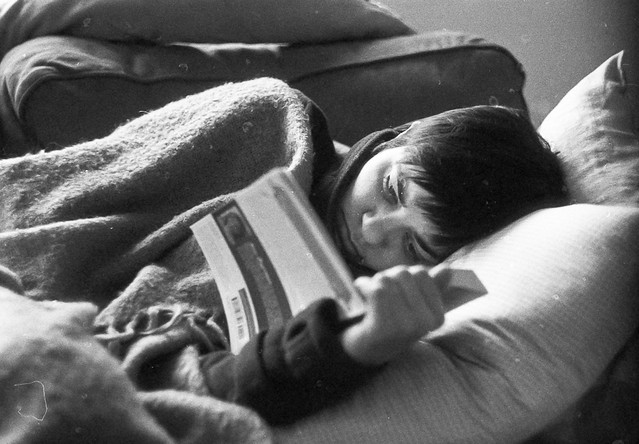
(Contax F, Ilford HP5 Plus 400, expired, ISO 400/27°)
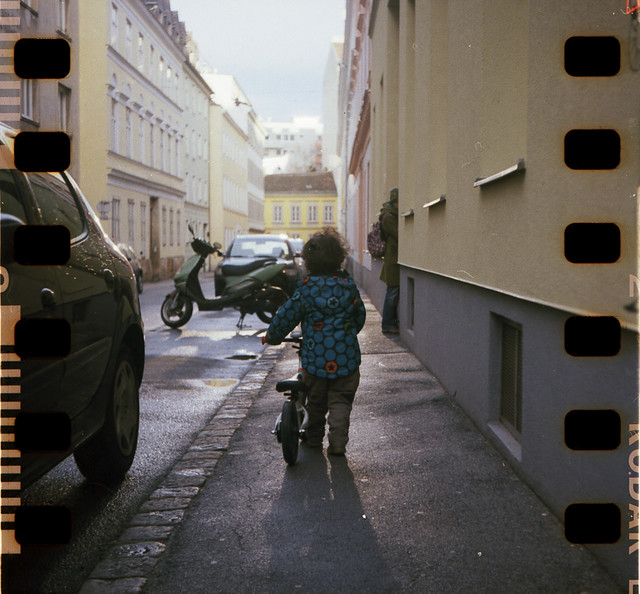
(Baby Ikonta 521/18, Kodak Ektar 100, ISO 100/21°)
For my next year I wish I manage to keep taking as many pictures as I did this last one. Because I realized how nice it is being able to create memories, the ones that reach to your soul, and what a warm feeling it is to look at pictures of my family, of my friends. I realized, too, that my strongest motivation to grab a camera is, simply, to take pictures of my loved ones. I wish, too, not to loose the direction my photography seems to be taking. I guess I am defining my photographic style, and it feels right to me.
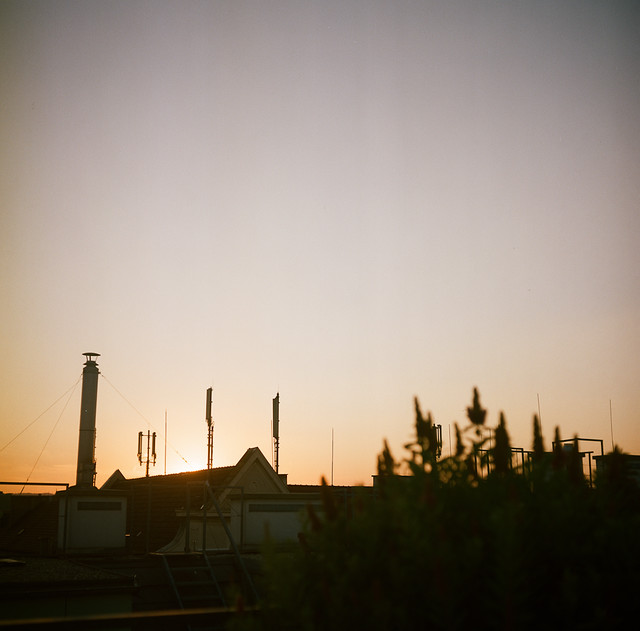
(Rolleiflex Automat 631, Kodak Portra 160NC, expired, ISO 160/23°)
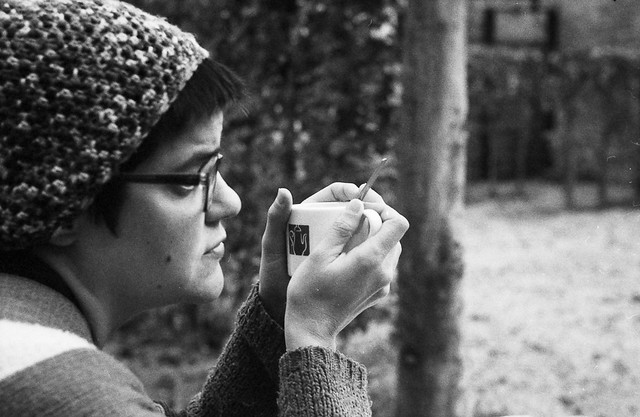
(Contax IIa, Ilford HP5 Plus 400, expired, EI 1600/32°)
And, of course, I wish I manage to find more time to write about this journey more often than this last year. I will be honored if you keep sharing it with me! :)
